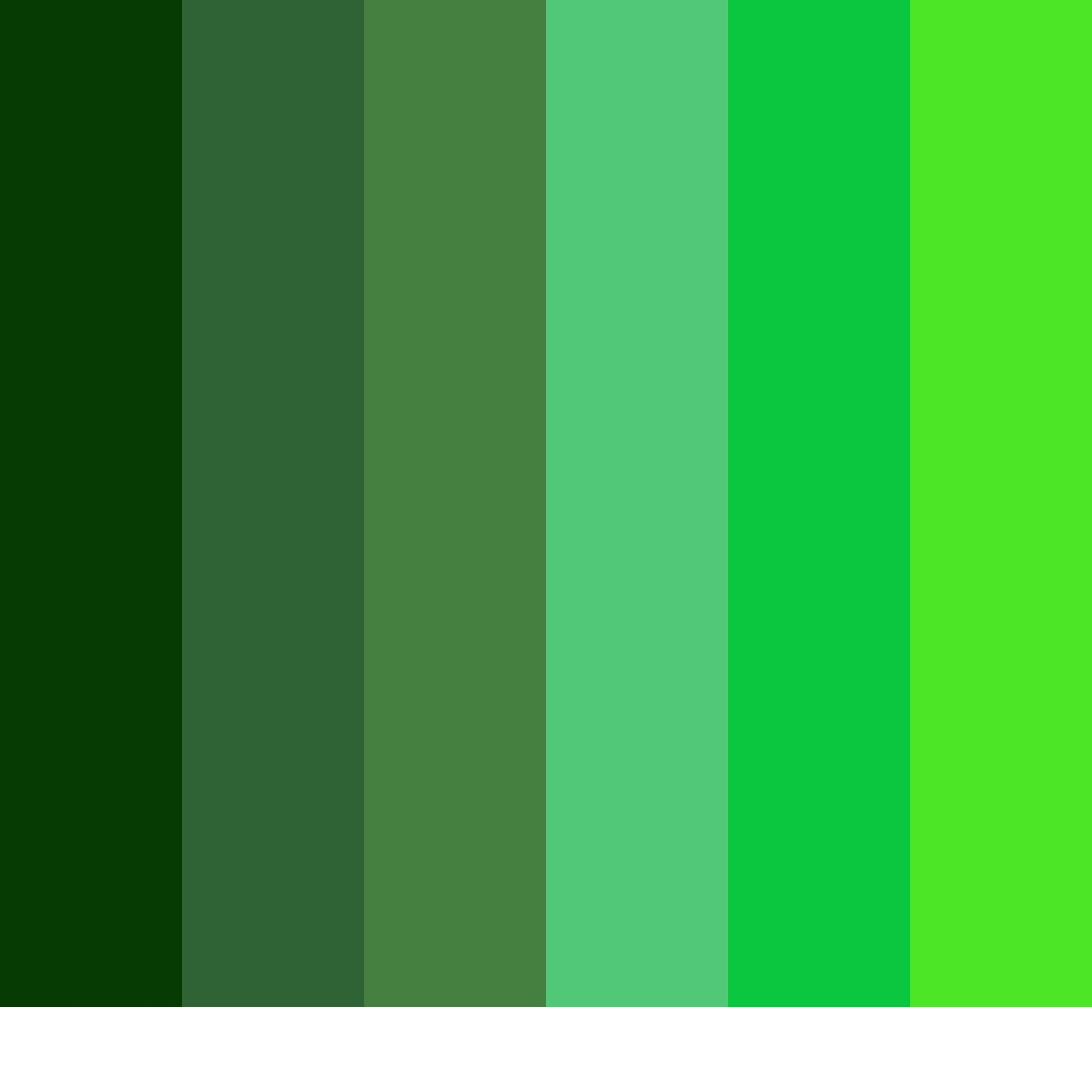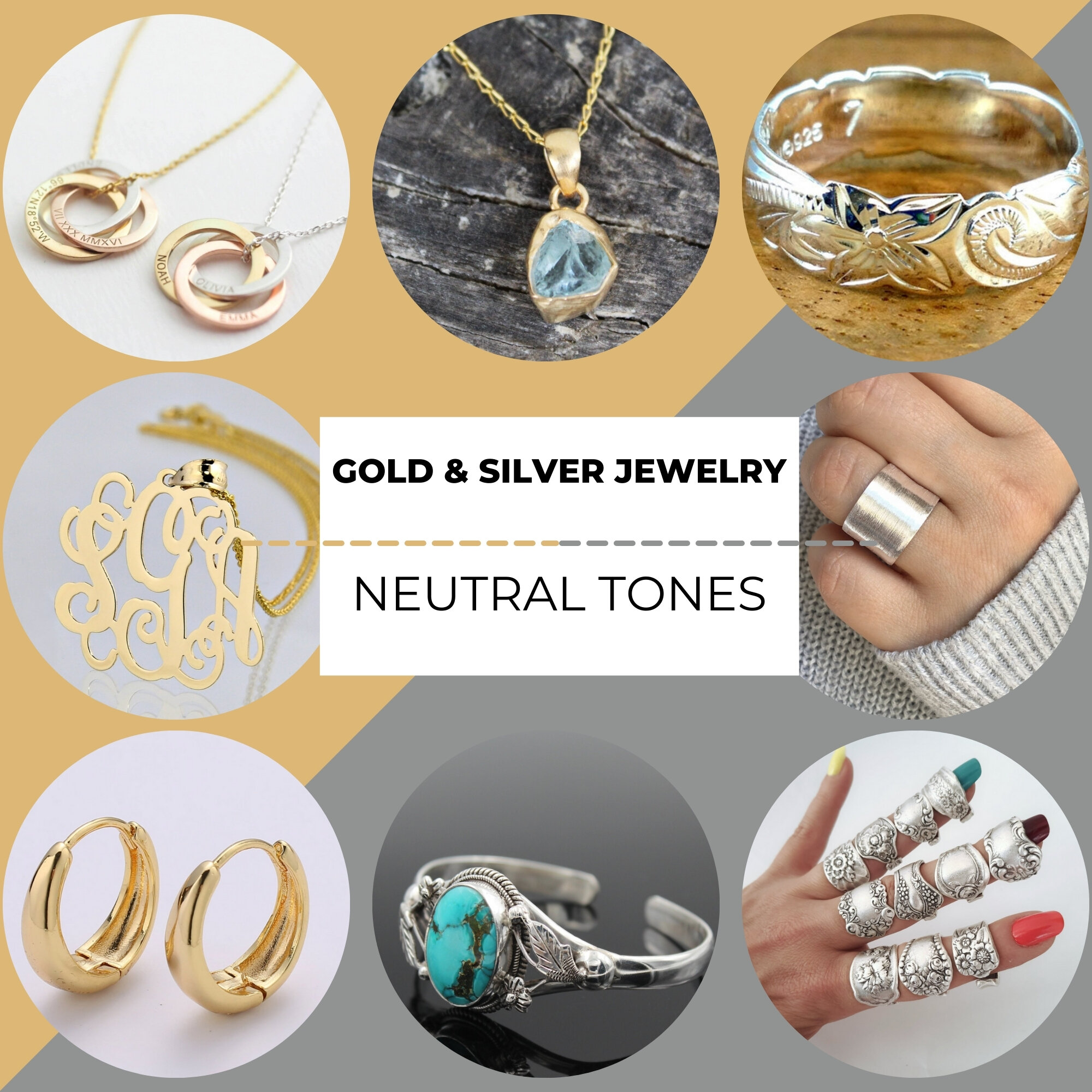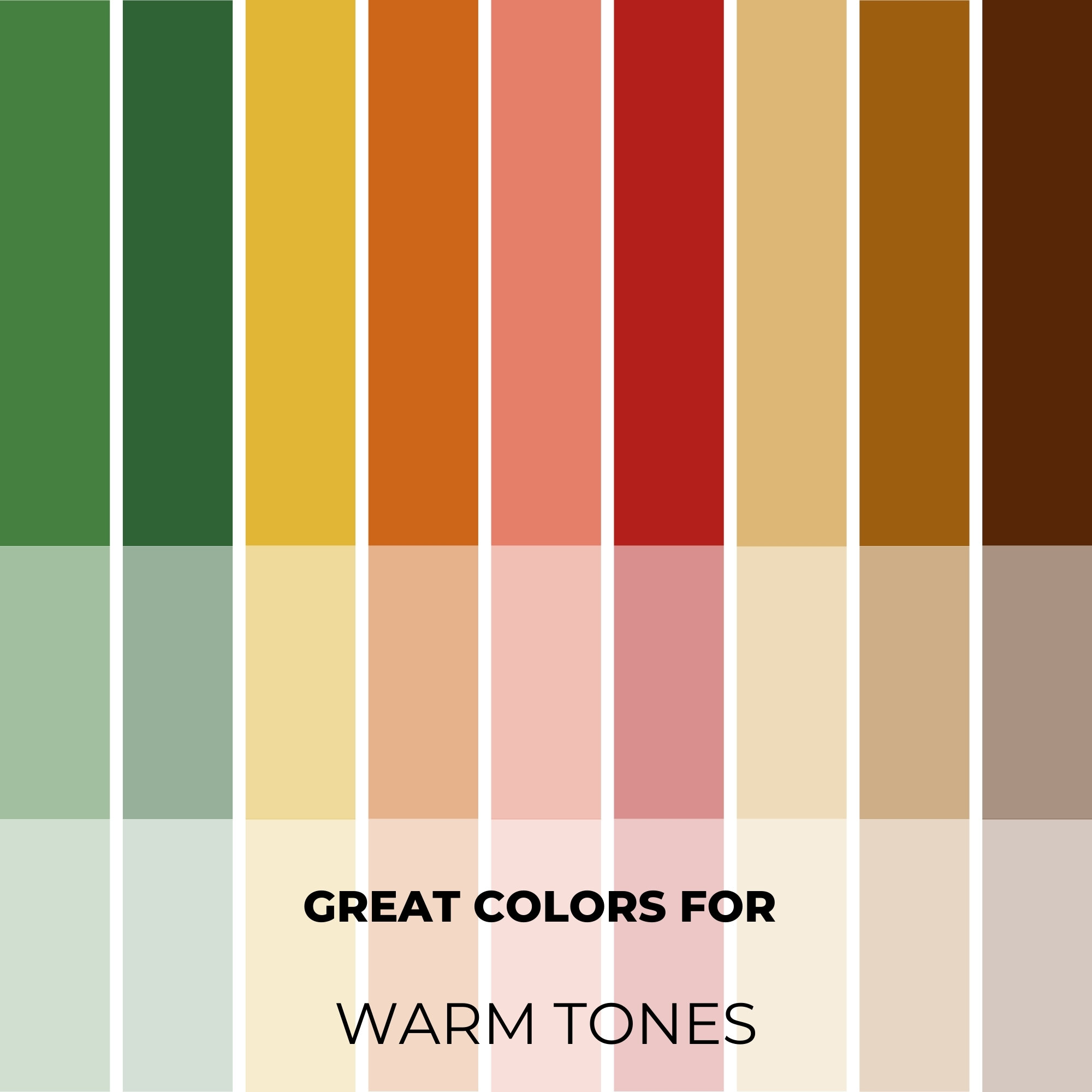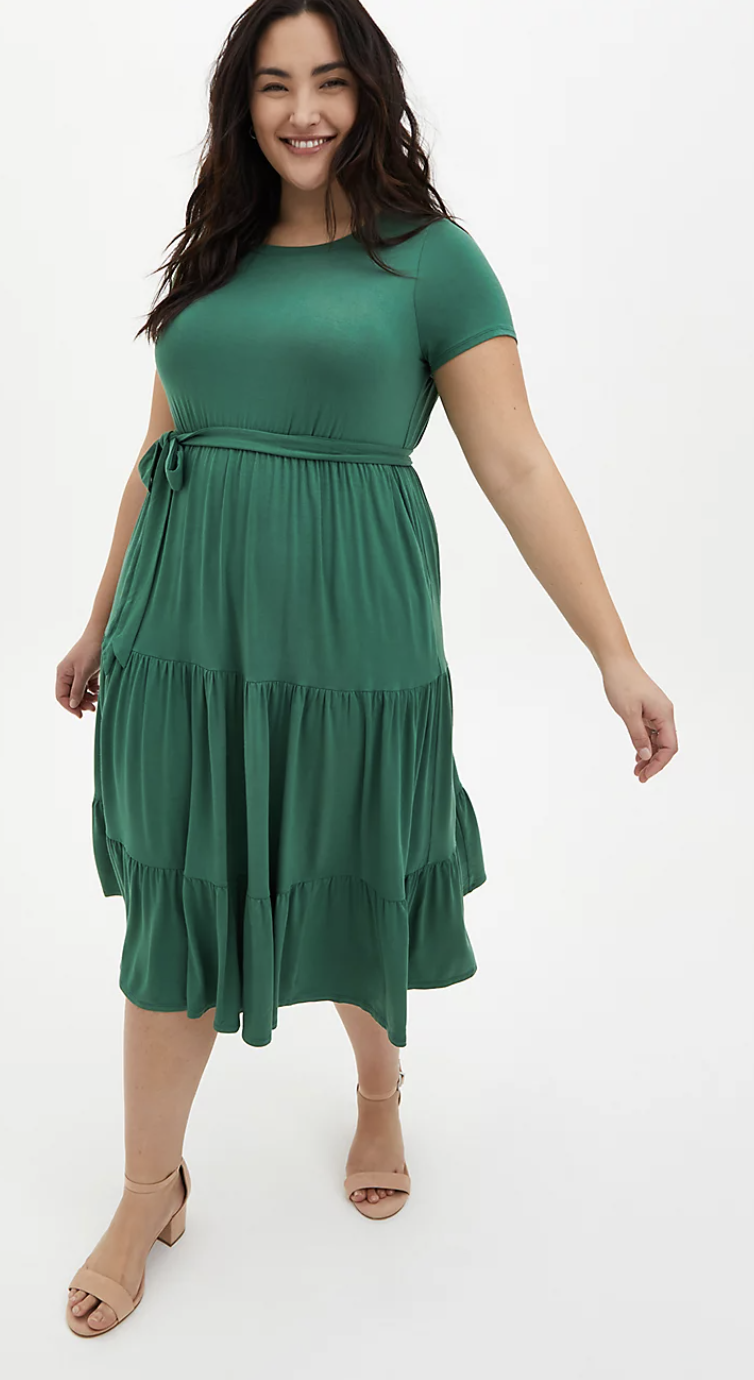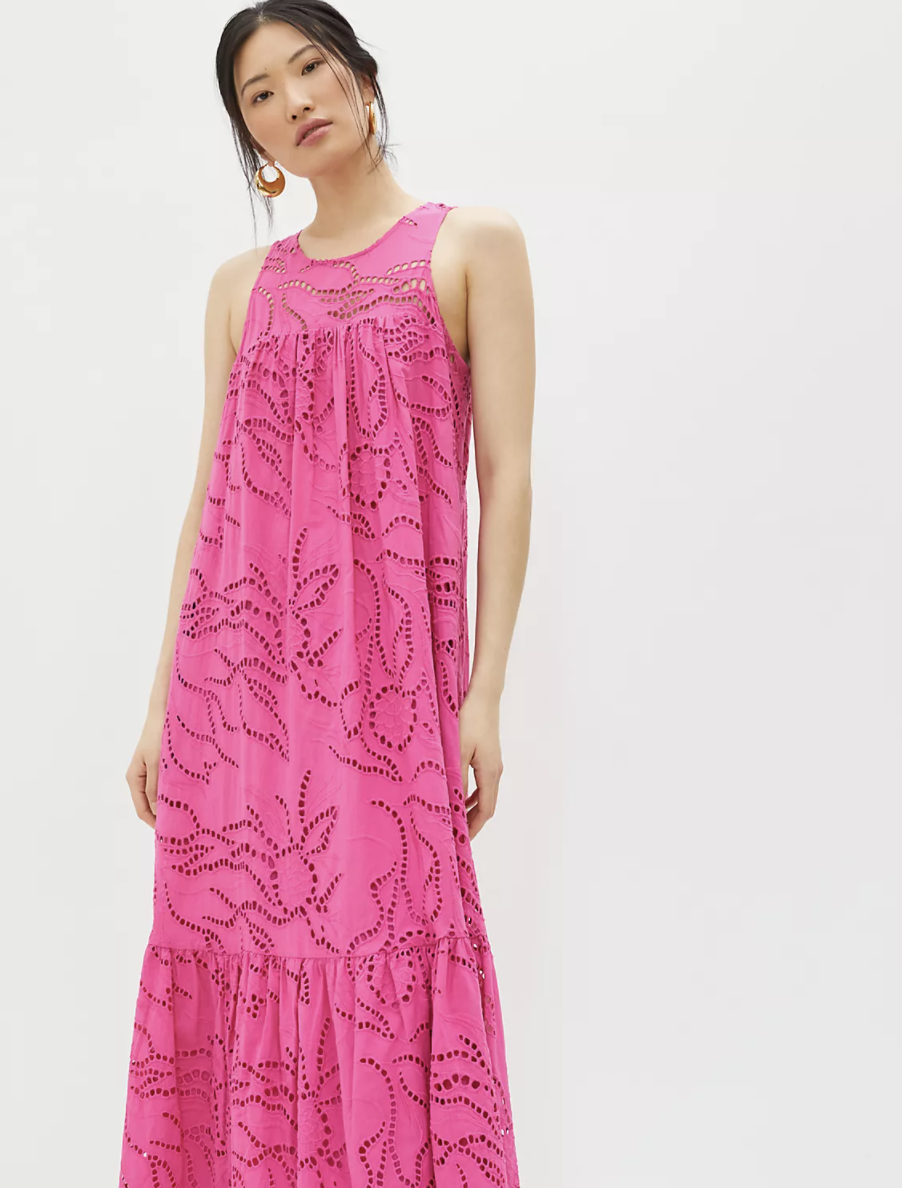How to identify the palettes that look best on your skin
A woman’s resource to understanding what palettes will look best on her skin tone.
This resource is designed to answer the following questions:
Do cool, warm, or neutral tones look best on me?
What colors work best for my skin?
Know this: all greens are not made equally!
Introduction to Color
Look at yourself. You come with beautiful coloring. Your eyes, your hair, and your skin tone are each unique to you. Finding the colors that complement your particular coloring will positively impact your confidence. You can go from looking ill to illuminated with a simple swap of color tone—even within the same “color.” Know this: all greens are not made equally.
Look in your closet. Is there a certain color you tend to gravitate to most because you like the way it makes you look (not because someone told you it was your color, but that you like the way it brings out your eyes)? It could be because subconsciously you know they work with your coloring best. The take-away here is to be conscious of your colors because they do make a difference.
Color is challenging because it’s emotional. Sometimes we love a certain color because it makes us happy, or we think it’s beautiful, but unfortunately, that particular shade may not work for us best. Let’s find the colors that compliment your features and reflect your personality and style preference. It’s possible, and we’re going to do it together!
The colors you choose to surround your face are most important because out of all your features, your face is where people will be paying the most attention. It’s also the place where you have the opportunity to enhance your hair and eyes most.
More often than not, if we can find the colors that harmonize with your skin tone, those colors will also complement your hair and eyes well, too. Our skin tones work with our natural hair tones. Therefore, if your hair is far from your natural hair color, you’ll want to pay closer attention to garment color to make sure it’s working for both your skin tone and hair color.
Cool, warm, and neutral tones
While there are many different skin tones in this world, they generally boil down to three tonal categories:
Cool tones
Warm tones
Neutral tones
Each of these tones has a complementing color palette that works best. To find out which tone you are, let’s start with a couple of simple questions.
Note: it’s best to conduct these observations in the natural light!
Does silver, gold, or both look good on your skin? Which pieces in your jewelry box do you reach for first?
Silver = cool tone
Gold = warm tone
Both = neutral tone
Do the veins inside your wrists look blue or green?
Blue = cool tone
Green = warm tone
Can’t tell = neutral tone
Finding The Right Color For Your Skin/Hair Tones
Earth tones are inspired by Earth’s landscape, from the olive green coloring of a forest to the rusty red of an Arizonan mountain top.
Jewel-toned colors are inspired by jewels and gemstones often found in jewelry. Sapphire blue, emerald green, and ruby red are examples of jewel-toned colors.
Typically, jewel tones will work best on cool-toned skin while earth tones highlight warm-toned skin well.
If you’re a neutral tone, then you’re in luck! Practically every color will look good on you. This doesn’t mean you can fall asleep at the wheel, though. Pay attention to the way colors compliment your skin tone as you may find that certain color groupings do you more favors than others.
For example, I play with both cool and warm tones, but have found that very pale peachy/beige-y/sandy/white colors make me look like the grim reaper. Even when my skin has warmer tones (summer tan), they remove all color from my skin and pay me no favors. I do NOT support those colors in my wardrobe. I keep this knowledge on hand while shopping, and in fact, avoid entire sections where that shade is present which actually ends up saving me a lot of time!
Take note of the different kinds of colors in each tonal category below. Now, think about your favorite color or piece in your wardrobe, are you seeing it generally represented here and under the tone you identified with?
Warm & Earth Tones
A combination of rich oranges, reds, yellows, and greens.
Cool & Jewel Tones
A mix of refreshing blues, blue-greens, and purples.
Mixing Core and Accent Colors
TIP: While you will have a plethora of colors to choose from, remember that we’re trying to create a cohesive wardrobe; one where pieces work with one another. This is why some choose to structure their wardrobes with “core” vs. “accents” colors along the 80/20 lines (80% core, 20% accents). This gives you the freedom and range to pair many looks together with your clothing, while also adding in the occasional accent to vary things up.
Example Combinations of Core and Accent Colors for Warm and Cool Tones
Restate Your Color Preferences
I recommend repeating your Color preferences to commit them to memory.
“I have [warm, cool, neutral] skin tones so the following color types work best for me …”
[Example: bright, jewel-toned blue]
Your color preference: ________________
Your color preference: ________________
Your color preference: ________________
A Seeking Inspirato Feature Discusses The Importance of Color
“A few years ago I got rid of all of the color in my wardrobe, and I loved how simple it was. I could put on anything, and it’d go together. But I missed color, so I slowly started adding it back in, and it was the stuff that I liked and complemented me — blue, yellow, red, some green. No orange, no purple, no brown — which is good because every time that I’d buy those things, I’d never end up wearing them!”
In-depth guide to finding your skin tone and the colors that work for you. Read more >
Find celebrities that have your skin tone. Explore now >
![New Image How to Identify the Palettes That Look Best On Your Skin [Resource].jpg](https://images.squarespace-cdn.com/content/v1/5a5bb2d44c326d0693be1df9/1619034362016-JXVEWD9EX703UZAV62RX/New+Image+How+to+Identify+the+Palettes+That+Look+Best+On+Your+Skin++%5BResource%5D.jpg)
